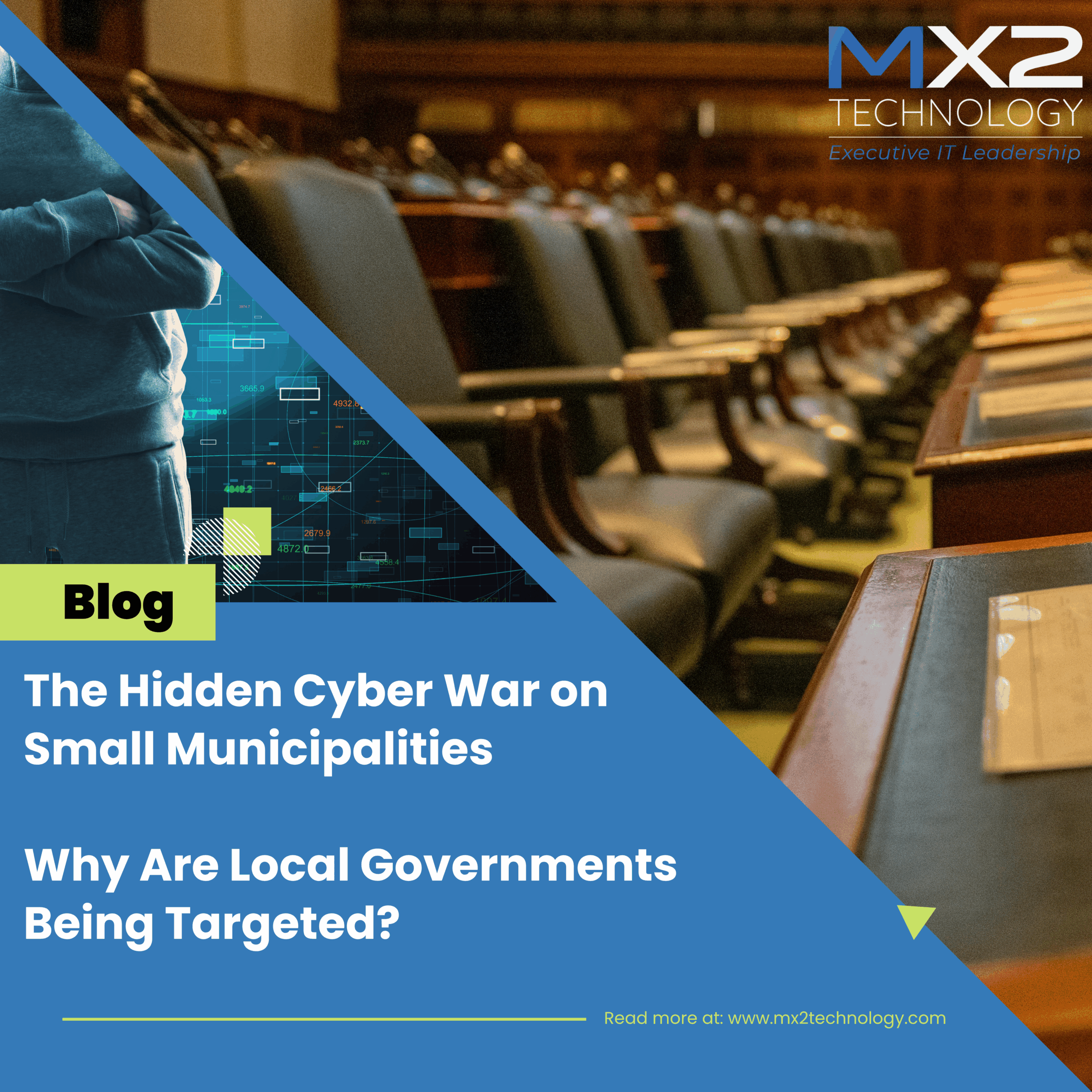As someone who’s spent years observing cybersecurity incidents unfold in local governments, we have seen firsthand how unprepared many small municipalities are for today’s digital threats. It’s no longer surprising when a city’s entire IT infrastructure goes down after a ransomware attack or when sensitive resident data is dumped online. What’s alarming is how preventable many of these breaches truly are.
Small city municipalities have become prime targets for cybercriminals—and the number of successful attacks is increasing across the entire United States. From California to Colorado, these cities often lack the very basics of cybersecurity hygiene: up-to-date tools, on-going training, disaster recovery plans, and even modest IT budgets.
Why Are Local Governments Being Targeted?
Based on what I’ve seen, the same vulnerabilities appear repeatedly:
- Cities are using outdated systems with known security flaws.
- Most lack a dedicated cybersecurity expert or even a part-time security resource.
- Cybersecurity is often seen as a “nice to have,” not a core requirement.
- There’s minimal training for city employees who are the first line of defense.
- Backups either don’t exist or aren’t tested, meaning cities often have no choice but to pay ransoms.
Recent Cybersecurity Breaches in the Western U.S. (2023–2025)
These examples highlight the painful consequences of underinvestment in cybersecurity. They’re not just headlines—they’re warning signs:
- City of Modesto, CA (2024): Ransomware attack disrupted city operations and exposed sensitive data.
- Estimated Cost: $1.2 million (recovery, legal, and system rebuild)
[Source: The Modesto Bee – April 2024]
- Estimated Cost: $1.2 million (recovery, legal, and system rebuild)
- City of Hayward, CA (2024): Breach disrupted emergency communications and led to a potential data leak.
- Estimated Cost: $950,000 (forensic response, vendor remediation, data recovery)
[Source: CBS News Bay Area – March 2024]
- Estimated Cost: $950,000 (forensic response, vendor remediation, data recovery)
- City of Oakland, CA (2023): Ransomware shut down services and resulted in mass data leaks.
- Estimated Cost: $4–6 million (including outside consultants, overtime, lawsuits, and data restoration)
[Source: The Verge, Wired – February 2023]
- Estimated Cost: $4–6 million (including outside consultants, overtime, lawsuits, and data restoration)
- City of Wheat Ridge, CO (2023): Ransomware disabled public services and email systems for weeks.
- Estimated Cost: $400,000 (including third-party response and operational delays)
[Source: The Denver Post – August 2023]
- Estimated Cost: $400,000 (including third-party response and operational delays)
- City of Gresham, OR (2025): Billing and account data were accessed and exfiltrated.
- Estimated Cost: $1.5 million (due to delayed billing, external audits, and platform rebuild)
[Source: KATU News – January 2025]
- Estimated Cost: $1.5 million (due to delayed billing, external audits, and platform rebuild)
- City of Santa Fe, NM (2025): Hackers exploited vulnerabilities and stole administrative records.
- Estimated Cost: $750,000 (system upgrades, legal review, and PR management)
[Source: Santa Fe New Mexican – February 2025]
- Estimated Cost: $750,000 (system upgrades, legal review, and PR management)
- City of Azusa, CA (2023): Data breach exposed employee records after failed ransom negotiations.
- Estimated Cost: $500,000 (employee identity protection, legal fees, data security overhaul)
[Source: GovTech – October 2023]
- Estimated Cost: $500,000 (employee identity protection, legal fees, data security overhaul)
What We Can—and Must—Do to Prevent the Next Breach
Here’s what I’ve learned from watching these incidents unfold: small municipalities don’t need massive budgets to make progress. They need a strategy. Here’s where to start:
- Make cybersecurity part of the annual city budget
- Hire or contract expert help (CISO, MSP, or MSSP)
- Train every employee—even one phishing click can be catastrophic
- Implement security essentials: MFA, EDR, secure backups, and network segmentation
- Follow a proven framework like NIST or CIS Controls
- Pursue state or federal grant funding for public sector cybersecurity
- Develop and test an incident response plan regularly
How MX2 Technology, Inc. Can Help Municipalities Strengthen Cybersecurity
At MX2 Technology, Inc., we specialize in supporting small to mid-sized municipalities with cost-effective, compliance-ready IT solutions. We’ve helped public sector clients protect sensitive data, maintain system uptime, and achieve cybersecurity maturity.
Here’s how we support city governments like yours:
- ✅ Virtual CISO (vCISO) services to guide your cyber strategy
- ✅ Security gap assessment and remediation plan and implementation
- ✅ On-going security program to maintain and improve security posture.
- ✅ Managed Detection & Response (MDR) to detect and contain threats 24/7
- ✅ Compliance consulting for NIST, CMMC, and other critical frameworks
- ✅ Microsoft 365 GCC-High and Azure Government setup for secure collaboration
- ✅ Security Awareness Training tailored to public sector teams
- ✅ Incident Response Planning and Simulation to keep you audit- and breach-ready
- ✅ Grant strategy support to help unlock funding for your cyber investments
We’ve seen what can go wrong—but more importantly, we know how to help you make it right.
Conclusion: It’s Time to Treat Cybersecurity Like Critical Infrastructure
I’ve seen the damage a single breach can cause—a city paralyzed, sensitive data compromised, and public trust shattered. But I’ve also seen the transformation that happens when cities take cybersecurity seriously.
If you’re a city leader or support local governments, now is the time to act. Don’t wait to become the next headline. Partnering with the right cybersecurity experts—like MX2 Technology—can give your city the defenses it needs to stay resilient, compliant, and secure, all while keeping it affordable.



